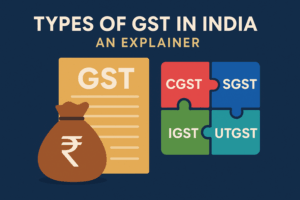
Equity investing gained popularity in India in the past decade, thanks primarily to investors’ preference for relatively safer mutual fund investments. High-voltage campaigns such as ‘Mutual Funds Sahi Hai’ also helped. Investors are exploring new ways of investing in mutual funds to maximize returns.
Mutual funds are investment vehicles in which investor money is pooled by an Asset Management Company (AMC) and invested in a diversified portfolio of stocks, bonds, and other securities, depending on the scheme. Diversification reduces risk and increases the potential for returns.
Lumpsum investments and SIPs are popular ways to invest in a mutual fund scheme. However, investors often struggle to understand ‘What is SIP?’ and ‘Is SIP good or bad?’ We are writing this blog post to simplify the meaning and utility of a Systematic Investment Plan (SIP) and how investors can use SIP to create wealth over time.
What is an SIP?
A SIP is an investment strategy that enables investors to invest a fixed amount of money regularly. The investment frequency could be daily, weekly, or monthly.
Each mutual fund scheme has a different SIP investment threshold. Typically, the minimum investment amount can be as low as Rs. 100, making SIP investment accessible to investors across categories.
Each SIP installment is treated as an independent investment, allowing investors to benefit from market volatility and take advantage of market corrections to average down their investments.
SIPs facilitate disciplined investing and harness the power of compounding. As investments grow, the returns generated can be reinvested, leading to exponential wealth creation.
SIPs are especially beneficial for young investors with a longer time horizon, allowing them to ride out market volatility and benefit from long-term trends.
SIP: The most effective way of investing
SIPs are often regarded as one of the most effective ways to invest in mutual funds, thanks to several factors:
- Investment Discipline:
SIPs encourage investors to commit to regular contributions, fostering a habit of saving and investing over time. Additionally, they help automate investments, removing timing and human emotions to a large extent compared to pure equity investments.
- Rupee Cost Averaging:
By investing fixed amounts regularly, investors can buy more units when prices are low and fewer units when prices are high. This averaging effect can lead to better overall portfolio returns.
- Flexibility:
Investors can start with small amounts and gradually increase their contributions as their disposable income increases.
- Convenience:
SIPs automate the investment process through auto-debit facilities, making it easier for investors to stay on track without manual intervention.
Overall, SIPs provide a structured approach to investing that aligns well with long-term financial goals.
Are SIPs safe?
Yes, SIPs are safe, but they are subject to market risks.
Investors should note that SIPs carry the risk of the asset that the fund invests in. Thus, an SIP in a debt fund will be subject to lesser fluctuations., On the other hand, an SIP in a mid- or a small-cap equity mutual fund will be more volatile as the fund’s objective is to capitalize on the market returns by investing in high-risk, high-return equity assets.
Essentially, safety does not mean immunity to market volatility.
When can you start an SIP?
As an investor, you can start SIP anytime and at any age. There is no right time to start an SIP, such as a bull run or market downturn. Additionally, age is no bar for starting SIPs. You can start an SIP at 18 years or even after you turn 80.
Starting an SIP is straightforward and can be done at any time. Investors must select a mutual fund scheme that aligns with their financial goals and risk tolerance. The process typically involves:
- Choosing a Mutual Fund: Research various mutual funds based on historical performance, expense ratios, and alignment with personal investment objectives.
- Setting Up the SIP: Investors can initiate SIPs through various channels such as DIY online platforms, asset management companies (AMCs), mutual fund distributors (MFD), or registered investment advisors (RIAs).
- Completing KYC Requirements: New investors must complete Know Your Customer (KYC) documentation before starting an SIP.
First, select the funds that match your investment goals and risk profile, choose your method of investing, such as SIP or lumpsum, and complete your KYC. Then, you can select the preferred amount, set the frequency, opt for a step-up if applicable, and start creating wealth through mutual funds.
For how long can you run an SIP?
The duration of an SIP is flexible and largely depends on individual financial goals and market conditions. Therefore, there are generally no fixed terms for SIPs; they can be run as long as the investor desires.
However, it’s essential to note that some mutual funds may have specific lock-in periods or exit loads associated with them. For instance:
- Open-ended Funds typically do not have lock-in periods but can have exit loads if withdrawn before a specified period. However, Equity-Linked Savings Schemes (ELSS) have a three-year lock-in period during which investors cannot redeem their units.
- Close-ended Funds: Close-ended funds only allow lump-sum investments and do not allow premature redemption. They are not suitable for investors looking to make regular investments through SIPs.
While SIPs are safe even in the long run, mutual fund portfolios require periodic rebalancing. Investors can decide whether to increase, decrease, or stop SIPs in a fund when they perform the rebalancing exercise.
Can you change the SIP amount?
The short and definite answer is ‘Yes’. One of the main reasons why SIPs win the “Are SIPs good or bad debate” is flexibility. Investors can change, pause, or stop SIPs as they wish.
Here are some common ways to adjust your SIP:
- Increase or Decrease the Amount: Investors can increase or decrease their monthly contributions by contacting their fund house or using online platforms.
- Step-Up SIP: This allows investors to set a predetermined percentage increase in their SIP amount at regular intervals (e.g., 10% annually), helping them align their investments with income growth.
Periodically reviewing and adjusting your SIP contributions ensures that your investments align with your evolving financial objectives.
Can you invest lumpsum in a scheme where you have an SIP running?
Investors can make lumpsum investments into mutual fund schemes where they already have an ongoing SIP if the fund house allows lumpsum investments. Some schemes have a minimum and maximum cap on SIP amount and do not allow lumpsum investments. In such cases, you cannot.
However, if lumpsum investments are allowed in the mutual fund scheme with an ongoing SIP, the strategy can help you invest your lumpsum income, such as bonus, inheritance, etc. Lumpsum investment during a market downturn can also help you get the averaging benefit.
However, investors must assess their overall portfolio strategy and risk tolerance before making lump-sum investments alongside ongoing SIPs.
Conclusion
Systematic Investment Plans (SIPs) are powerful tools for individuals looking to build wealth through mutual fund investments. By promoting disciplined investing, offering flexibility in contribution amounts, and allowing for adjustments based on changing financial circumstances, SIPs cater to a wide range of investors—from novices to seasoned professionals.
Starting an SIP requires minimal initial capital and provides the benefits of rupee cost averaging and compounding over time. Whether you invest regularly through an SIP or make additional lump-sum contributions, understanding how these mechanisms work will empower you to make informed decisions about your financial future.
In summary, whether you are just beginning your investment journey or looking for ways to optimize your existing portfolio, exploring the potential of Systematic Investment Plans could be one of the best decisions you make for your long-term financial health.







